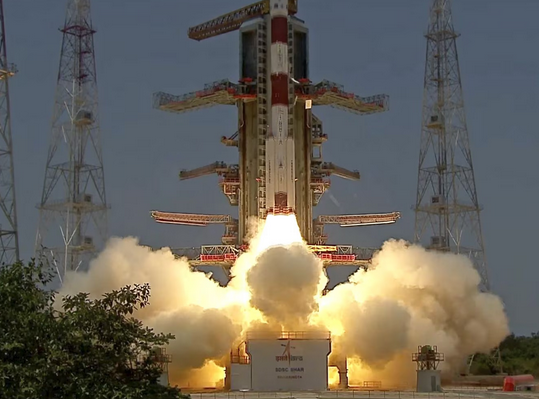Onward, sunward: On India’s mission to study the sun
Aditya-L1 gives the Indian space programme one more boundary to push
Roughly a week after the Indian Space Research Organisation (ISRO) soft-landed a robotic lander and rover on the moon’s south polar region, it launched India’s first space mission dedicated to studying the sun, in the form of a spacecraft named Aditya-L1. Barely half a day after the launch, ISRO announced that its lunar rover had completed the surface studies it had planned and that it had been “ parked ” ahead of the two-week-long lunar-night . This vignette illustrates a certain maturity on-the part of the Indian space programme: it enters a phase where its growth from strength-to strength becomes indistinguishable from international leadership in space exploration , even as it carries-forward an old tradition of studying the sun, exemplified by the Kodaikanal Solar Observatory. Aditya-L1 will study the sun in multiple wavelengths with its suite of seven instruments: four remote-sensing and three in-situ (i.e., by directly sampling a particular volume of space). Even though it is the star closest to the earth and has been and continues to be observed by a panoply of telescopes , the sun still holds many secrets. Some of them are simply waiting to be discovered, although that is easier said than done given the brutality of the star’s influence on its immediate surroundings . One example is the particulars of the solar wind, a stream of charged particles that stream out from the sun into space. Considering the solar wind affects space weather and in-turn the digital components of spacecraft, Aditya-L1’s findings could inform future space missions as well. Others are mysteries — bundles of facts not yet fully explained by scientific theories. The archetypal example is the coronal heating problem: why the uppermost layer of the sun’s atmosphere is a thousand times hotter than the sun’s surface.
In the next four or so months, Aditya-L1 will travel to the L1 Lagrange point , a point 1.5 million kilometres from the earth, where the spacecraft will have an unobstructed view of the star while it stays in a halo-orbit around the point. To deepen its relevance , Aditya-L1 will also have to record and transmit data to earth as quickly as possible, where the data downlink and analysis-pipeline will have to operate with similar haste , so that scientists can piece-together a concurrent image of the sun. ISRO has also demonstrated its ability to handle complex navigational tasks in interplanetary missions (including the lunar space programme, Chandrayaan) with help from foreign space agencies, and the attendant skills will be brought to bear on Aditya-L1 as well. Taken-together , while Aditya-L1 seems relatively simple given ISRO’s recent achievements, it gives the Indian space programme and the national solar physics community one more boundary to push.
